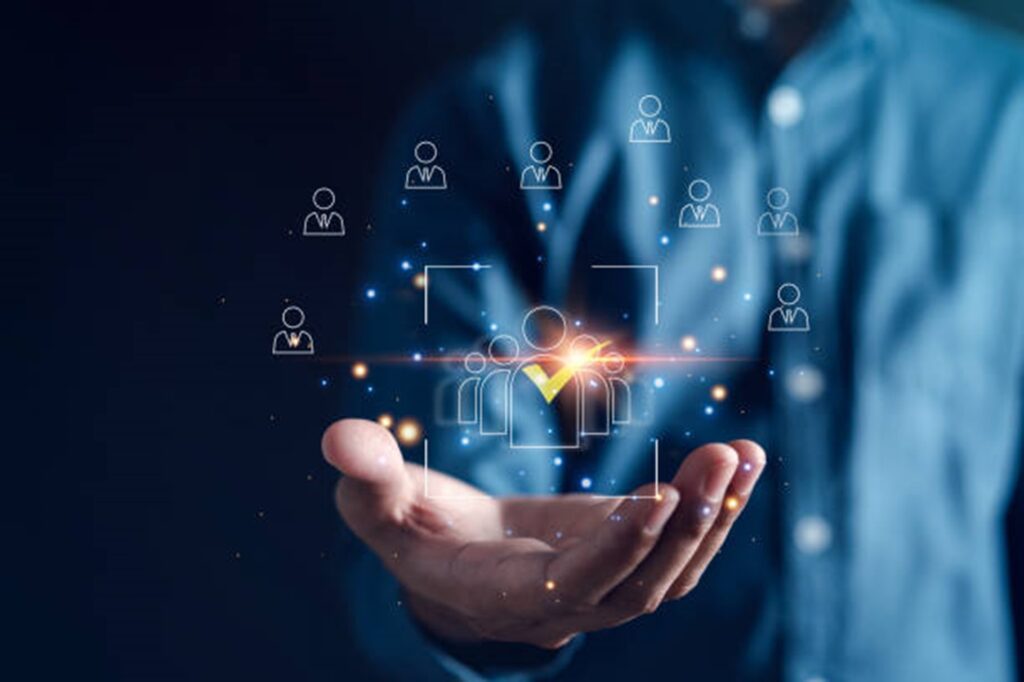Transforming HR Operations: The Strategic Impact of Human Resource Management Systems

HRM systems, or Human Capital Management (HCM) or Human Resource Information Systems (HRIS), are software features that automate and simplify a company’s HR procedures. The significant systems offer a one-stop shop for all things related to human resources by consolidating all HR data and functions into one place.
Primary Goals of Human Resource Management System
Here are the main goals of HRMS:
- Data Management: The HRMS is a hub for all of an employee’s records, including their bio, work history, abilities, and performance evaluations. Effective data management and access for HR professionals is made possible by this.
- Job Postings, Application Tracking, and Onboarding Made Easy: Numerous HRMS systems streamline the hiring process by handling these facets. This facilitates organizations’ smooth recruitment, selection, and integration of fresh talent.
- Features for Monitoring Employee Attendance, Working Hours, and Requests for Time Off are Common in Human Resource Management Systems. Processing payroll and staying in line with labor standards are both made more accessible by this.
- Human Resource Management Systems (HRMS) facilitate performance management by letting businesses set and track performance objectives, evaluate employees’ work, and see how they do over time. Strategic decision-making and talent development are both aided by this.
- Development and Training: These platforms provide the administration of training programs, the detection of skill lacking, and the monitoring of advancement. This helps with the continuous training of employees and improves their talents on the job.
- The HRMS automates computations, deductions, and tax-related operations, streamlining payroll processes and improving benefits administration. It oversees employee benefits, making sure they are appropriately administered and in compliance.
- Self-Service for Employees (ESS): A human resources management systems (HRMS) include portals where employees may see their info, request a payoff, examine their pay stubs, and make changes. This lessens the load on administrators while also increasing staff engagement.
Evolution and Adoption Trends in Globex’s HRMS
The evolution of HR technology has undergone several phases:
- Legacy Systems: Initially, HR relied on different processes and separate standalone systems for tasks like payroll and employee records.
- Integrated Systems: As organizations sought more efficiency, integrated HRIS emerged, consolidating various HR functions into a unified platform.
- Cloud-Based Solutions: Globex’s HRMS gained popularity, offering accessibility and cost-effectiveness. This made organizations manage HR processes freely.
- AI and Analytics: Integrating artificial intelligence (AI) and analytics into HRMS has improved decision-making by providing insights into workforce trends, performance, and employee engagement.
- Mobile Accessibility: With the rise of mobile devices, HRMS platforms have adapted to provide mobile-friendly UI interfaces, enabling access and functionality.
- Employee Experience Focus: The new HRMS focus enhances the all-employee experience through intuitive interfaces, personalized dashboards, and self-service capabilities.
- Blockchain and Security: The latest technologies, like blockchain, are being explored to enhance data security and integrity within HR systems.
- Continuous Updates and Adaptation: Human resources technology changes slowly, with business or vendors regularly updating their systems to incorporate new features, compliance requirements, and technological advancements.
Why Do Organizations Need HR Management Goals?
Strategic human resource management aims to build and maintain a high-performing workforce by identifying, recruiting, developing, and devising plans to retain and motivate key employees. Equal treatments of employees are another goals of human resource management policies and practices.
By satisfying the needs of all parties involved—shareholders, consumers, and employees—strategic human resource management seeks to gain a competitive edge. The “strategy” of an organization is its grand plan for making money. The following are some of the numerous components that make it up:
- The company takes action in response to consumer demands.
- Organizational management policies and processes
- Methods employed in the creation of a product or service
- Services and goods are sold through marketing.
- Budgetary choices implemented to finance business activities
- Company hierarchy
- Methods and tools utilized to facilitate corporate operations
- concerns about human resources, including hiring, onboarding, training, pay, benefits, and evaluation
- Rules and laws that are relevant to the business.
In today’s fast-changing business world, having the correct info is crucial. Thekeyphrase blog is like a go-to source for helpful knowledge. It shares easy-to-understand articles and breakdowns about what’s happening in different industries.
Future Trends in HR Management Systems:
1- AI and Machine Learning Integration:
- Predictive Analytics: HRMS can leverage AI and machine learning algorithms to predict workforce trends, identify potential talent gaps, and forecast employee turnover.
- Automated Decision Support: AI-driven decision support systems will assist HR professionals in making data-driven recruitment, performance management, and employee development decisions.
2- Enhanced Employee Experience:
- Personalization: HRMS will focus on providing more personalized experiences for employees, tailoring interfaces and content based on individual preferences and needs.
- Employee Well-being: Integration of features related to employee well-being, such as mental health support, stress management tools, and wellness programs, will become more prominent.
3- Remote Work and Collaboration Tool:
- Virtual Collaboration: With the increasing prevalence of remote work, HRMS will incorporate advanced collaboration tools, fostering virtual team communication, project management, and collaboration.
- Flexible Work Arrangements: HRMS will improve to support and manage various flexible work arrangements, including remote work jobs, flexible scheduling, and about teams.
4- Blockchain for HR Data Security:
- Decentralized Identity Verification: Blockchain technology may be integrated to enhance employee data security, give decentralized identity verification, and ensure the integrity of HR records.
- Smart Contracts for HR Processes: Smart contracts on the blockchain can automate and secure HR processes, such as employment contracts, benefits administration, and compliance tracking.
5- Skills and Learning Management:
- Continuous Learning Platforms: HRMS has always been a program for learning and will evolve to become a comprehensive learning and development platform, offering personalized learning paths, skill assessment, and real-time feedback.
- Skills Gap Analysis: Advanced analytics will help organizations identify skills gaps within their workforce, guiding targeted training initiatives to address evolving business needs.
6- Emphasis on Diversity, Equity, and Inclusion (DEI):
- DEI Analytics: HRMS will incorporate tools to measure, track, and report on diversity, equity, and inclusion metrics. This includes representation data, pay equity analysis and inclusive hiring practices.
- Bias Mitigation: AI algorithms within HRMS be refined to minimize bias in hiring processes and performance evaluations, promoting fairness and equity.
7- Continuous Performance Management:
- Real-time Feedback: Traditional annual performance reviews will replace continuous performance management systems, allowing real-time feedback, goal tracking, and ongoing performance discussions.
- 360-Degree Feedback Integration: Good feedback is critical it affects employee performance and goals. HRMS will integrate 360-degree feedback mechanisms, providing a good view of an employee’s performance from multiple perspectives.
8- Global Compliance and Localization:
- Localized Compliance Feature: HRMS enhanced features to accommodate diverse global regulations, ensuring organizations can manage HR processes in compliance with various legal and cultural requirements.
- Multi-Language Support: It will improve all language support and enable HRMS platforms to cater to the linguistic diversity of the global workforce.
9- Integration with Emerging Technologies:
- Extended Reality (XR): Integration of XR technologies, such as virtual reality (VR) and augmented reality (AR), for immersive onboarding, training simulations, and virtual team building.
- Internet of Things (IoT): HRMS may be suitable for IoT devices to gather real-time data on employees’ well-being, work utilization, and health and safety metrics.
10- Green HR and Sustainability Practices:
- Carbon Footprint Tracking: HRMS includes the feature to measure and reduce the carbon footprint of the HR process, contributing to organizational sustainability goals.
- Green Recruitment Practices: Technologies within HRMS will support sustainable and eco-friendly recruitment practices, such as virtual interviews to reduce travel-related emissions.
Conclusion:
The significant developments of areas in HR management software indicate how technology plays an increasingly important role in molding HRM’s future, with an emphasis on improving, and supporting the employee experiences, securing the base, and adjusting to the ever-shifting dynamics of the modern workplace.

The To Tech Award 2024: The City That Produces the Revolutionaries of Tech

The Financial Side of Moving: Budgeting and Saving Tips

Making Memories: International Rakhi Celebrations and Traditions

Pre-Requisites Before Applying for an Instant Personal Loan

Embrace the Magic of Turkey: An Unforgettable Visit

Step-by-Step Guide to SAP Brownfield Migration

How to Summarize a Report Accurately in Seconds

Project Management and Accounting in Dynamics 365










